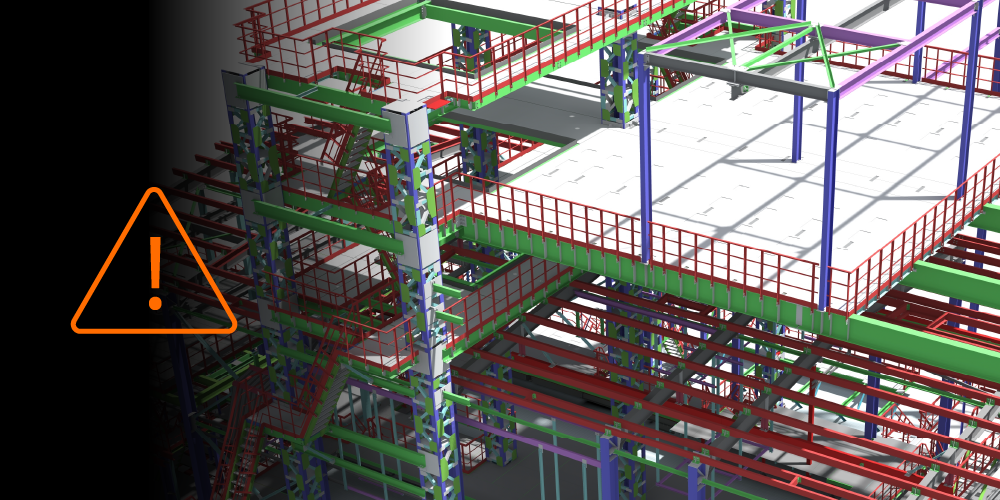Related Articles
— 12 min read
How to Manage Variation Orders to Protect Cost, Time, and Risk

Last Updated Oct 30, 2025

Josh Krissansen
47 articles
Josh Krissansen is a freelance writer with two years of experience contributing to Procore's educational library. He specialises in transforming complex construction concepts into clear, actionable insights for professionals in the industry.
Samantha Nemeny
30 articles
Sam—Samantha if she’s feeling particularly academic—has spent a decade in content marketing, with eight years focused on Australia’s construction industry. She has a knack for making complex ideas easy to understand, turning industry jargon into clear, engaging stories. With a background in SEO and marketing, she’s spent the past three years at Procore, helping industry professionals navigate the world of construction with content that’s both insightful and easy to digest.
Last Updated Oct 30, 2025

Variations are not a one-off anomaly. In fact, they’re a certainty on almost every construction project.
But if they’re such an inevitable part of the development process, why are owners and contractors keen to minimize their occurrence?
On large commercial builds, variation orders can lock up tens of millions in disputed claims, placing immediate pressure on cash flow and working capital. Research by Ruben Ndihokubwayo and Clinton Haupt shows that variation orders increase project costs by an average of 7%, equal to $14 million on a $200 million project.
The objective is not to eliminate variations but to minimise their frequency and impact as much as possible. While this is doable, construction professionals will need to learn to implement disciplined controls to protect margins, preserve liquidity, and strengthen client relationships to make it happen. In this article, we’ll cover these essential strategies and explore how to reduce the risk of disputes and compliance issues to extend beyond practical completion.
Table of contents
What is a Variation Order, and Why Does It Matter in Construction?
A variation order is a formal amendment to a construction contract that alters the agreed scope, cost, or timeframe. As a formalised process embedded within project delivery, running it ensures scope changes are properly authorised and compensated.
Here are the key facts that cover this process (and the document it results in):
- Variations must remain within the original project scope.
- Significant changes that alter the nature of the works may require retendering.
- A signed variation order remains industry best practice for securing payment.
- Principals can still claim disputed variations, but this comes with a higher risk of rejection or delayed payment.
That’s why managing variations properly is so important. Doing so ensures transparency between parties, reduces the likelihood of disputes, and sets clear contractual obligations.
In Australia, written variations are required under standard contracts such as AS 4000 and are enforceable through the Security of Payment Acts. Keeping variations under SOPA highlights just how central their role is in directly influencing project cost, schedule, and compliance through documentation in construction.
Common Reasons for Variation Orders
Unsurprisingly, variation orders arise for the same reason as many other potentially challenging issues in construction and development: unclear briefs, scope creep, and late-stage design changes, to name a few.
That’s certainly what Ndihokubwayo and Haupt’s study concluded, finding that these factors extend project timelines by an average of 30% compared to the original program.
Their observations track, even in the real world: every late change compounds financial exposure, stretching overheads, delaying revenue recognition, and straining client relationships.
Let’s now run through the common triggers for variation orders so you can recognise when they occur and use countermeasures to build stronger controls and contingency plans that reduce disruption and protect project outcomes.
Client-Driven Design or Scope Changes
Late-stage preferences are a frequent source of variation orders. Owners may request redesigns, layout changes, or upgraded finishes after construction has already begun.
These adjustments often introduce new features outside the original scope, extending the program and increasing overall cost.Errors or Omissions in Design
Design deficiencies are a significant source of financial and program risk. Incomplete briefs, inaccuracies, or conflicting documentation often drive rework and scope adjustments, which must be formalised through variation orders to avoid unrecoverable costs.
A Brisbane inner-city commercial refurbishment highlights the impact.
The project experienced more than 1,000 variations, many of which were drawing-related (150 original architectural drawings ballooned to 398 during delivery.
These gaps added over $1.45 million to the contract. They delayed completion by eight months, illustrating how insufficient documentation at tender forced design development during construction and triggered urgent, costly changes once works were underway.Unforeseen Site Conditions
Latent conditions can force unexpected changes. Rock, asbestos, or groundwater may only be discovered once excavation begins, while hidden utilities not recorded on drawings can require rerouting.
Addressing these issues often demands specialist subcontractors, adding both cost and time pressures to the project.Regulatory or Code Changes
Updates to the National Construction Code, new council requirements, or compliance issues uncovered during inspections can immediately alter the scope of work. Approvals and permits may also be delayed, forcing contractors to adjust schedules or reallocate resources to maintain compliance
Material Shortages or Substitutions
Material supply challenges frequently lead to variations. Unavailable or delayed items, such as alternative cladding or fixtures, may require substitutions.
Cost increases can also arise when quotes expire before approval, and global supply chain disruptions or freight constraints add further uncertainty to budgets and delivery schedules.
Each of these triggers highlights the same reality: even if they’re common, variations are inconvenient.
But they shouldn’t — and don’t need to be — inevitable. What separates smooth delivery from drawn-out disputes isn’t whether variations occur, but how well they’re documented and managed once they do.
The next step is critical in achieving this end: you’ll need to understand exactly what a variation order must include to protect payment rights, minimise conflict, and keep projects moving forward.
What a Variation Order Must Include
Variation orders are often at the centre of payment disputes, which consume time, erode relationships, and drain profit. A White & Case analysis found that disputes account for about 2.6% of total project costs under conventional contracting.
This reinforces that unclear or incomplete variations are not just an administrative gap, but a direct financial risk. The most effective way to minimise that risk is to ensure every variation order is complete, precise, and formally approved so claims remain enforceable.
Contract and Project Details
Each variation order should clearly identify the project and contract it relates to. Include the project name, contract reference, and a unique variation order number so the change can be tracked without ambiguity.
Description of the Change
Provide a precise explanation of what is being added, removed, or amended in the scope of work. Clarity at this stage reduces the risk of misinterpretation and disputes later in the project.
Reason for the Variation
Set out the justification for the change. Common reasons include client instructions, unforeseen site conditions, or regulatory updates. Stating the cause establishes accountability and supports compliance requirements.
Cost Implications
Detail the variation's financial impact. Break down materials, labour, and any additional charges, referencing contract rates where applicable. Transparent costing strengthens the contractor’s position in payment claims.
Time Implications
Explain how the program will be affected. Confirm whether the variation requires an Extension of Time and specify the revised completion date. Linking the change to project scheduling ensures contractual obligations remain clear.
Approvals and Signatures
A variation order must be executed in writing. Secure signatures from the client, contractor, and Superintendent to formalise the agreement and protect payment rights under the Security of Payment Acts.
Types of Variation Orders
Variation orders fall into several categories, each requiring clear documentation to ensure compliance and protect payment rights.
Additive variations
Increase the project scope, cost, or time, such as adding new rooms, finishes, or systems.
Deductive variations
Reduce scope or cost by removing work, for example, eliminating planned landscaping or reducing fit-out items.
Substitution variations
Replace specified materials or methods with alternatives, often due to cost pressures or supply shortages.
Directed variations
Formal instructions from the client or Superintendent that clearly authorise the change and its terms.
Constructive variations
Changes made without formal instruction, typically when contractors act to resolve site issues and later seek compensation, which increases dispute risk.
Origin of variations
Variations may be initiated by the client, proposed by the contractor, or caused by external factors such as latent conditions or regulatory updates.
How the Variation Order Process Works
The Brisbane inner-city commercial refurbishment case study illustrates the risks of a slow or informal variation process.
Approvals for additions took an average of 93 days, contractors acted on verbal instructions to keep work moving, and variation claims were left unresolved until after completion, leaving hundreds of thousands in limbo.
Without process discipline, variations quickly erode cash flow and margin. A structured sequence from identification to documentation ensures changes are properly authorised, priced, and enforceable under the contract.
Identification of Change
A potential change is identified, whether from a client instruction, a latent site condition, or a design clarification. The issue should be raised promptly and recorded. Importantly, no work should begin until the proposed change has been reviewed to confirm it falls within project scope.
Written Variation Request
The contractor or client submits a formal request detailing the change. This document should describe the scope adjustment, state the reason for the variation, and outline its potential impact on cost and time.
Effective document control at this stage establishes a defensible record for future payment claims.Evaluation and Quotation
The contractor evaluates the request and prepares a quotation. Pricing should reference the contract’s agreed rates and include labour, materials, and overheads.
Schedule impacts must also be assessed. Supporting evidence such as subcontractor quotes, revised drawings, or updated specifications strengthens the submission.Approval and Issuance of Formal Variation Order
The Superintendent or client reviews the request and issues a formal variation order in writing. Once signed by all relevant parties, the variation becomes contractually binding. This step is critical to ensuring enforceability under the Security of Payment Acts.
Implementation and Documentation
The approved variation is communicated across the project team and integrated into the construction program. Progress against the revised scope is tracked through project controls, and the variation register is updated to maintain a complete record of all approved changes.
This documentation provides transparency and protects both contractor and client if disputes arise.
How Experienced Builders Manage Variation Orders Effectively
Variation orders must be managed with the same rigour as budgets and schedules. For executives, effective control means protecting margin, preserving cash flow, and reducing legal exposure.
The following practices represent the standards that leading Australian builders enforce across projects.
Stay Proactive on Cost
Variation costs can quickly erode profitability if not standardised and tightly reviewed. Executives should mandate processes that make costs predictable, auditable, and defensible:
- Standardise pricing: For every change, require a variation cost sheet. Reference contract rates and the Bill of Quantities, with line items for materials, labour, plant, preliminaries, and margin.
- Set QS gateways: Mandate independent quantity surveyor review above defined thresholds. Each submission should be either accepted or returned with documented revisions.
- Control exposure: Use a live register to track pending, approved, and rejected variations. Report the total against contingency at every cost meeting.
- Protect cash flow: Consolidate approved variations into monthly progress claims, aligned with the Schedule of Values for auditability and compliance under the Security of Payment Acts.
- Time-box quotes: Record validity periods on supplier and subcontractor pricing, and revalidate before approval to prevent cost slippage.
Protect the Schedule
Variations can disrupt delivery as much as they affect cost. Builders who manage them well require programme impacts to be assessed upfront and documented to keep projects on track:
- Assess programme impact first: Before approval, a written statement on float use, critical path effects, resequencing needs, and procurement changes is mandatory.
- Apply for Extensions of Time early: Lodge notices within contractual time bars and link each EOT directly to the variation reference.
- Rebaseline after significant changes: Issue an updated programme, communicate it to all trades, and revise look-ahead plans and procurement logs.
- Enforce freeze points: Lock design and scope milestones, and escalate late changes to an executive change board with fixed decision timeframes.
Avoid Bottlenecks and Improve Governance
Slow approvals create unnecessary risk and delay. Strong governance keeps decisions moving quickly and ensures accountability at every level:
- Define approval authority: Publish a matrix of value-based limits for site, project, and executive roles, including Superintendent authority.
- Set service levels for decisions: Mandate review and approval timeframes, such as five working days, and auto-escalate if deadlines are missed.
- Run a variation board: Make the live register a standing agenda item at weekly project reviews, highlight blockers, assign owners, and set due dates.
- Clarify roles with a RACI: Define who raises, prices, reviews, and approves variations before embedding the framework during project onboarding.
Keep Records Clean and Compliant
Disputes often come down to the quality of records. Builders that excel in this area create a single, defensible record for every change:
- Require written approval only: Ensure no work begins without signed approval, which is aligned with Australian Standard contracts and Security of Payment legislation.
- Maintain a single source of truth: Number every variation and store correspondence, drawings, photos, quotes, and approvals against that reference in a central platform.
- Control versions: Keep drawings and specifications current, log revisions that trigger variations, and update as-built drawings.
- Ensure claims readiness: Link each approved variation to the Schedule of Values and progress claims, maintaining an audit trail for adjudication.
Embed Procedures and Roles
Variation management is most effective when procedures are contractualised and teams are trained to follow them consistently:
- Contractualise the process: Include a clear variation procedure in head contracts and subcontracts, with defined forms, content, and response times.
- Onboard the team: Train staff and subcontractors on initiation, document management, pricing, approval, and communication protocols.
- Conduct preconstruction risk reviews: Identify likely variation drivers such as latent conditions or incomplete design, and assign early actions.
- Tighten package clarity: Define inclusions and exclusions in trade packages to reduce the scope gaps that later become variations.
Maintain Financial Discipline and Reporting
Executives must track variations with the same discipline as any revenue stream. Without strong reporting, variations can distort margins and mislead stakeholders:
- Define mark-up rules: Document allowable mark-ups by cost category and enforce consistency across all variations.
- Apply WIP controls: Review work-in-progress reports for variation recovery, margin dilution, and ageing of pending items, escalating overdue approvals.
- Align revenue recognition: Match variation recognition with contract status, avoiding recognition of unapproved scope.
- Separate provisional sums: Distinguish provisional sums from variations in reporting and claims to keep financials transparent.
Use Technology and Data
Digital platforms provide the transparency and auditability that executives demand. Leading builders leverage data to manage variations in real time:
- Adopt a unified platform: Manage RFIs, submittals, drawings, and variations in one system, with digital signatures and audit trails.
- Integrate costs: Push approved variations into budgets and forecasts automatically, updating the Schedule of Values and claim documents.
- Deploy analytics and dashboards: Track counts, cycle times, approval ageing, and cost impact by category or trade, and use trends to remove bottlenecks.
Variation management protects margin and reduces dispute risk
Disciplined control of variation orders ensures cost predictability, protects cash flow, and keeps projects compliant. Through enforcement of structured processes, clear approvals, and accurate documentation, builders can minimise disruption and safeguard project outcomes.
Categories:
Written by

Josh Krissansen
47 articles
Josh Krissansen is a freelance writer with two years of experience contributing to Procore's educational library. He specialises in transforming complex construction concepts into clear, actionable insights for professionals in the industry.
View profileSamantha Nemeny
30 articles
Sam—Samantha if she’s feeling particularly academic—has spent a decade in content marketing, with eight years focused on Australia’s construction industry. She has a knack for making complex ideas easy to understand, turning industry jargon into clear, engaging stories. With a background in SEO and marketing, she’s spent the past three years at Procore, helping industry professionals navigate the world of construction with content that’s both insightful and easy to digest.
View profileExplore more helpful resources

Managing Direct Costs in Construction: How Visibility Drives Profitability
Direct costs define the financial reality of every construction project. They cover the labour, materials, and equipment that drive delivery and determine profitability. But even the best-planned budgets can shift...

BIM Clash Detection: Reducing Rework, Delays, and Risk in Construction
Design clashes can be a significant hidden cost in construction, as each conflict between systems risks expensive rework, project delays, and reduced margins. BIM clash detection empowers teams to identify...

Next-Gen Job-Costing: Ready to Move? 5 Things to Consider Before You Get Started
In this three-part series, Quantity Surveyor turned Financial Solutions Specialist Clint Burgess uncovers the real-world gains for people, processes, and profits when businesses move from legacy to next-generation Enterprise Resource...

From Workarounds to Workflow: Solving Construction’s Legacy Job-Costing System Challenges with Next-Gen Tools
In this three-part series, Quantity Surveyor turned Financial Solutions Specialist Clint Burgess uncovers the real-world gains for people, processes, and profits when businesses move from legacy to next-generation Enterprise Resource...
